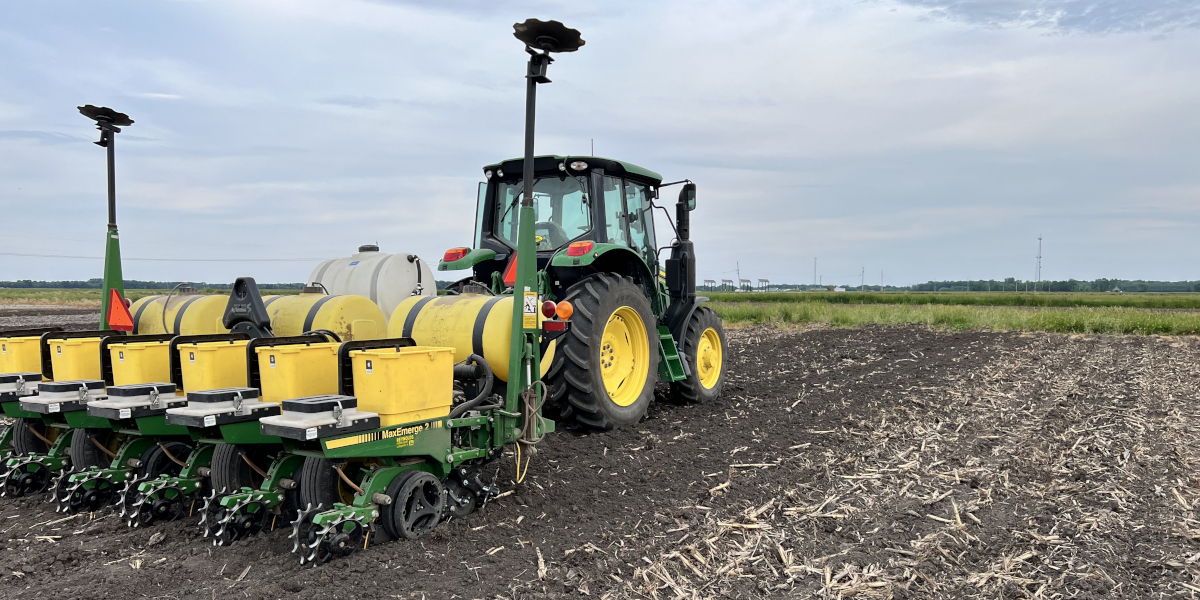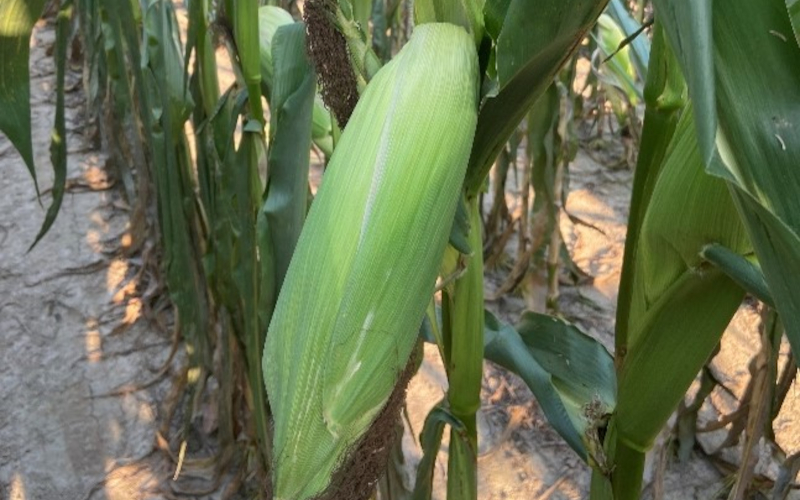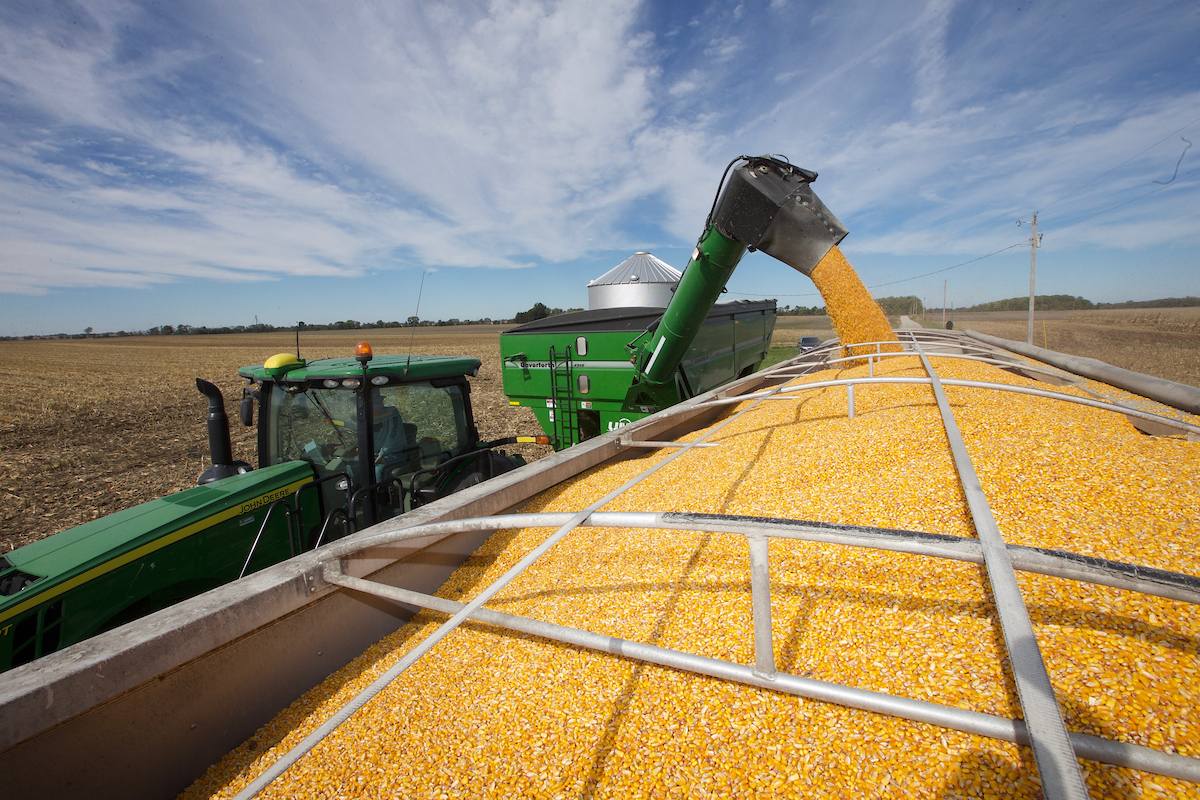It’s Not Easy Being Green. The Many Colors of Early Season Corn
Over the last couple weeks in central Indiana, average air temperatures have increased by 28% to an average of 78 degrees Fahrenheit and then again decreased by 33% to an average of 52 degrees Fahrenheit. The combination of large temperature swings, significant cooling off, and bright sunny days combined with cool nights have led to an array of different colored corn showing up as farmer’s begin to walk their fields this spring. The good news is for the majority of these colors, warm, sunny days will correct these issues.
Purple Corn: purple corn symptoms (Image 1) are caused by the accumulation of a purple pigment in the corn leaves known as anthocyanin. Corn leaves produce sugars by photosynthesis and these sugars are typically metabolized to generate energy for further plant growth. However, when cool temperatures caused plant growth to slow or root development is restricted, these sugars tend to accumulate in the leaf and trigger anthocyanin pigment formation (e.g., purple leaf color). Purple corn can also occur from a genetic response to bright, sunny days and cool nights (Nielsen, 2000). In addition, hybrid genetics can play a role in whether or not a corn plant produces anthocyanin. This symptom often disappears with warmer temperatures and yield losses should be minimal to none.
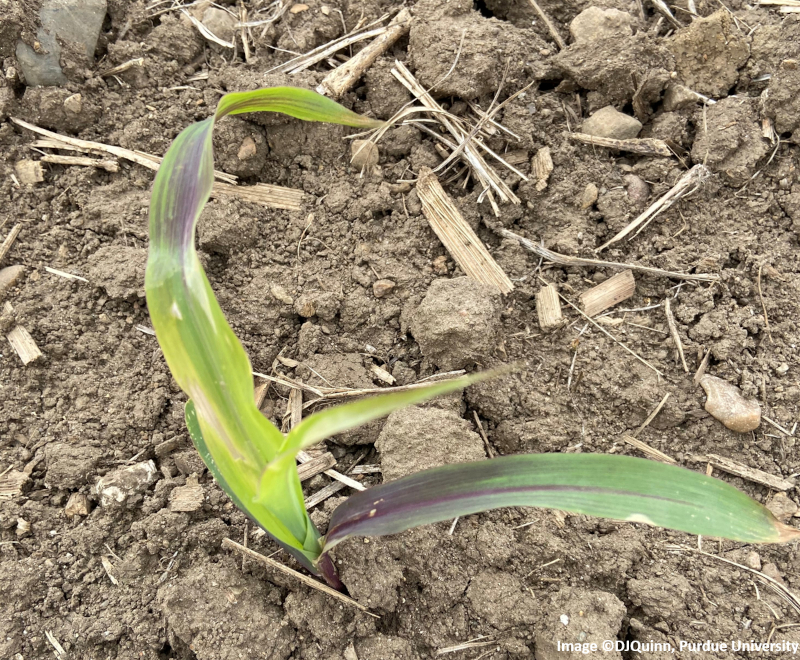
Image 1: Purple corn leaf symptoms observed on V2 corn in Northern Indiana in 2021 caused by the build up of anthocyanin in the corn leaves due to cool temperatures.
Note: This symptom is often confused with phosphorus deficiency of corn. So, before you get the fertilizer spreader out once these symptoms occur, pay attention to your soil test levels and to the corn as temperatures become warmer and if these symptoms begin to disappear.
Yellow-Green Corn: cool temperatures can also cause corn to appear ugly yellow-green instead of that dark, beautiful green we are all looking for. Up until corn reaches the V3 growth stage (3 visibly collared leaves), the energy and nutrition of the seedlings are dependent on the kernel reserves. Once corn gets beyond the V3 growth stage, seedlings begin to transition to being dependent on the nodal root system (Nielsen, 2010; Quinn, 2021). During this transition, when poor growing conditions occur (e.g., cool temperatures) this causes insufficient photosynthesis, slowed nodal root development, and poor plant nutrient uptake. Therefore, corn plants appear an ugly yellow-green. However, with more sunshine and higher temperatures, these symptoms are often resolved.
Silver Corn: over the last few days we have observed cool, calm, and clear nights which can cause radiational heat loss from corn leaves, thus causing minor leaf surface damage (Nielsen, 2021). This minor chilling injury can result in a silver or gray leaf surface often known as “silver leaf syndrome”. For more information please read this recent article.
White Corn: white or “bleached” corn leaves are often blamed on herbicide damage, specifically the pigment inhibitors herbicides (e.g., group 13 and 27). However, young corn that has been under environmental stress such as cool and cloudy weather, which can cause poor root development, can cause a white appearance (Hager and McGlamery, 1997). These symptoms have also been observed this year on corn that had significant root burn caused by a spring anhydrous application. Frost damage can also cause the bleaching of corn leaves, which was observed from frost events occurring recently in the Northern Corn Belt. Furthermore, single, white corn plants within a field can be genetic mutants, although this is a rare occurrence.
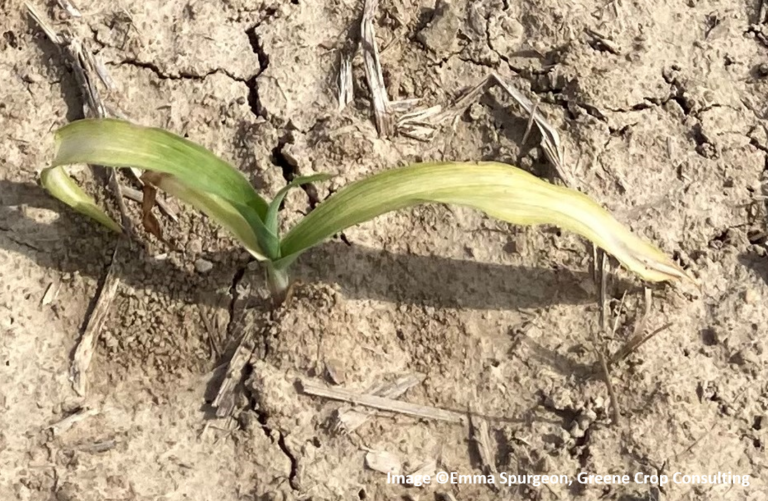
Image 2: Corn at the V2 growth stage exhibiting symptoms of white corn leaves caused by stressful early-season conditions in 2021. Credit Emma Spurgeon, Greene Crop Consulting.
References:
Hager, A., and M. McGlamery. 1997. Causes of White Corn Plants. University of Illinois Cooperative Extension Service
[link to be updated]
Nielsen, R.L. 2000. Isn’t Corn Supposed to be Green? Corny News Network, Purdue Extension.
https://www.agry.purdue.edu/ext/corn/news/articles.00/Corn_color-0523.html.
Nielsen, R.L. 2010. Corn and the Ugly Duckling. Corny News Network, Purdue Extension. https://www.agry.purdue.edu/ext/corn/news/timeless/UglyDuckling.html
Nielsen, R.L. 2020. Assessing Frost/Cold Temperature Injury to Young Corn. Corny News Network, Purdue Extension. https://www.agry.purdue.edu/ext/corn/news/timeless/FrostedCorn.html.
Nielsen, R.L. 2021. “Silver Leaf” Syndrome in Corn. Corny News Network, Purdue Extension.
http://www.kingcorn.org/news/timeless/Silverleaf.html.
Quinn, D.J. 2021. Corn Growth Stages VE to V3…What’s Going On? Purdue Extension.
https://kernel.sfp.cc/corn-growth-stages-ve-to-v3whats-going-on/.
Silva, G. Purple Corn Syndrome: What Causes Purple Coloration of Corn? Michigan State University Ext.
https://www.canr.msu.edu/news/purple_corn_syndrome_what_causes_purple_coloration_of_corn.



